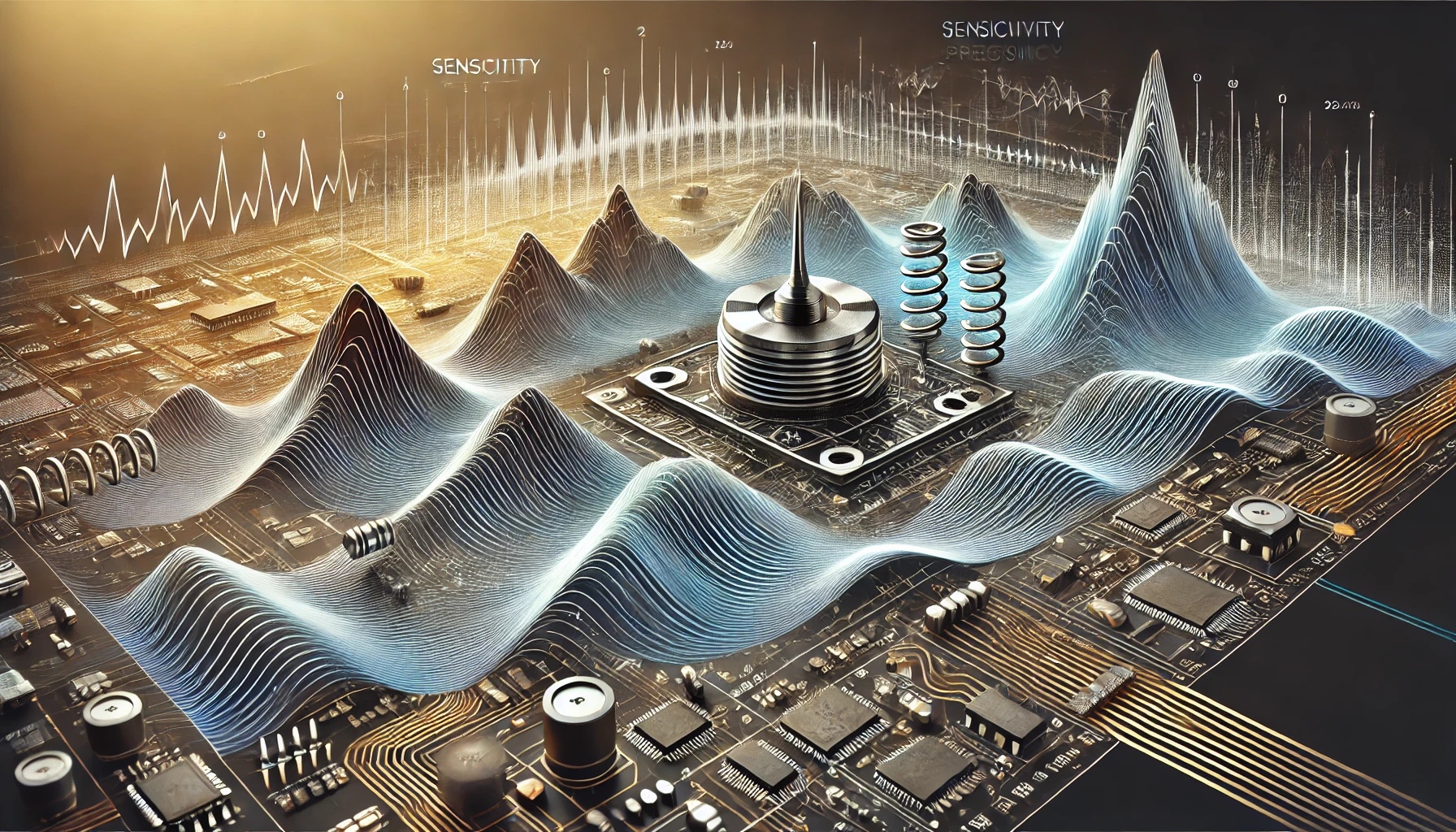Understanding Accelerometer Sensitivity and Area Size in Accelerometer Triggered Devices
In the world of modern technology, sensors play a crucial role in making devices smarter, more efficient, and more responsive to their environment. One such sensor that has gained significant attention is the accelerometer sensor. This tiny device is responsible for detecting motion, orientation, and acceleration in a variety of applications, from smartphones and fitness trackers to vehicles and industrial machinery. However, not all accelerometers are created equal, and factors such as accelerometer sensitivity and area size can greatly affect their performance.
For tech enthusiasts, engineers, and anyone interested in understanding how accelerometers work, this article will explore the inner workings of accelerometer sensors, focusing on their sensitivity and area size, and how these factors influence accelerometer-triggered devices. Additionally, we’ll highlight insights from TechSerps, a prominent platform offering valuable technological information for readers in Bangladesh and beyond.

What is an Accelerometer Sensor?
Before diving into the specifics of sensitivity and area size, it’s essential to understand what an accelerometer sensor is and how it functions. An accelerometer is a device that measures proper acceleration, which is the rate of change of velocity. It works by detecting the changes in motion or orientation of the device it’s attached to. These sensors are integral to numerous gadgets, including smartphones, fitness trackers, game controllers, automotive safety systems, and industrial equipment.
There are two main types of accelerometers:
- Mechanical Accelerometers: These rely on physical components like springs and masses to detect motion.
- MEMS (Microelectromechanical Systems) Accelerometers: These are more common in consumer electronics and use tiny mechanical elements to detect acceleration.
Both types of accelerometers are used to measure movements along three axes (X, Y, and Z), enabling them to detect both linear acceleration and rotational movements.
Sensitivity of Accelerometer Sensors
Accelerometer sensitivity refers to the sensor’s ability to detect small changes in acceleration or movement. This sensitivity is a critical factor in determining how accurately an accelerometer can measure motion, especially in applications that require high precision.
For example, in a fitness tracker, high sensitivity ensures that even small movements—like a step or slight wrist motion—are detected accurately, which is essential for tracking physical activity. On the other hand, in industrial equipment, low sensitivity may be desired to prevent false triggers from slight vibrations or irregular movements.
There are several factors that contribute to the sensitivity of an accelerometer:
- Technology Type: MEMS accelerometers generally offer better sensitivity than mechanical accelerometers due to their smaller size and higher precision.
- Design: The design of the internal structure, such as the springs, masses, and capacitive plates, affects the sensor’s responsiveness to motion.
- Signal Processing: The algorithms and signal conditioning used in accelerometer-triggered devices can amplify or filter the data from the sensor, improving or decreasing sensitivity.
- Range and Resolution: The sensitivity is also influenced by the accelerometer’s range. A sensor with a wider range (e.g., capable of measuring higher acceleration values) will often have a lower sensitivity to small movements.
In practical applications, the right level of sensitivity depends on the intended use. For example, automotive safety devices such as airbags require accelerometers with high sensitivity to detect rapid deceleration in the event of a crash. Conversely, gaming devices may require a lower sensitivity to avoid triggering actions due to minor movements.

Area Size of Accelerometer Sensors
The area size of an accelerometer sensor is another critical aspect that influences its performance. The area size refers to the physical size of the sensor’s detection surface, which can impact both the range and the precision of the measurements.
- Large Area Size: Accelerometers with larger area sizes generally have a higher dynamic range, meaning they can measure higher levels of acceleration. This can be useful in applications where detecting large forces is crucial, such as in automotive crash detection systems.
- Small Area Size: Conversely, smaller area accelerometers are typically more sensitive to subtle movements. This is especially beneficial in wearable devices like fitness trackers and smartwatches, where detecting small changes in movement is essential.
Additionally, smaller accelerometer sensors are often preferred in portable devices due to their compact form factor. MEMS accelerometers, which are commonly used in smartphones and wearables, are an excellent example of small-sized accelerometers with high performance. These sensors have a small footprint but are highly effective in detecting motion.
How Sensitivity and Area Size Impact Accelerometer Triggered Devices
An accelerometer-triggered device is a system that responds to a specific threshold of acceleration or movement detected by an accelerometer. For example, in smartphones, the screen orientation changes based on the acceleration detected by the accelerometer. In security systems, accelerometers can trigger an alarm if they detect unauthorized movement.
The combination of sensor sensitivity and area size significantly affects how well these devices perform. Here are some key points:
- False Triggers: If the accelerometer is too sensitive, it may trigger a device with every minor motion, leading to false triggers. For example, a smartphone might rotate its screen unnecessarily, or an accelerometer-triggered device might activate due to insignificant vibrations.
- Delay in Triggering: Conversely, if the accelerometer is not sensitive enough or has too large an area size, it may fail to detect the desired motion altogether. For example, an accelerometer-triggered device in an automotive system may fail to deploy airbags in time during a collision.
- Precision in Action: Devices that require precise triggering, such as gaming controllers, benefit from accelerometers with finely tuned sensitivity and smaller area sizes. This allows for accurate tracking of every subtle movement, enhancing the overall user experience.
The balance between sensitivity and area size is critical for ensuring that accelerometer-triggered devices respond accurately and reliably, without unnecessary activation or delayed response.

Real-World Applications of Accelerometer Sensors
The technology behind accelerometer sensors and their sensitivity and area size plays a significant role in many everyday devices. Here are some examples of how accelerometer sensors are used:
- Smartphones and Tablets: Accelerometers in these devices detect changes in orientation, allowing the device to switch between portrait and landscape mode. High sensitivity is essential for detecting even slight tilts.
- Fitness Trackers and Wearables: These devices rely on accelerometers to count steps, monitor activity, and track motion. High sensitivity and small area size are crucial for detecting subtle movements accurately.
- Automotive Safety Systems: Accelerometers in cars detect collisions or sudden deceleration, triggering airbags or safety features. In this case, high sensitivity is crucial for safety.
- Gaming Devices: Motion-controlled gaming consoles, like the Nintendo Wii, use accelerometer sensors to detect players’ movements and translate them into game actions. Precision is key here, and accelerometers with the right sensitivity and area size enhance the gaming experience.
- Industrial Equipment: Accelerometers monitor vibrations in machinery, helping detect malfunctions or wear and tear before they become major issues. Here, a balance of sensitivity and area size is needed for accurate readings.
Insights from TechSerps: The Role of Accelerometers in Technological Innovation
TechSerps is a platform that consistently delivers valuable insights into various technologies, including accelerometers. For tech enthusiasts in Bangladesh and around the world, TechSerps provides in-depth articles, reviews, and updates on cutting-edge advancements. Their detailed content about sensors and their applications offers readers a comprehensive understanding of how technologies like accelerometer sensors are revolutionizing industries.
By following TechSerps, you can stay informed about the latest developments in sensor technology, including innovations in accelerometer-triggered devices and how they are shaping the future of automation, smart devices, and even wearable tech. With the continuous growth of technology, staying ahead of trends with TechSerps ensures that you understand not just the “what,” but also the “how” behind the devices we use every day.

Closing Before
Understanding the sensitivity and area size of accelerometer sensors is crucial for optimizing the performance of accelerometer-triggered devices. Whether you are designing a new device or simply curious about the technology behind your gadgets, knowing how these sensors work helps ensure that you get the most accurate and reliable results.
By balancing sensitivity and area size, engineers can create devices that respond precisely to motion, enhancing user experience and safety. For those interested in diving deeper into the world of accelerometers and their applications, TechSerps is an excellent resource to explore the latest trends and developments.
As technology continues to evolve, accelerometers will remain integral to the functionality of countless devices. Whether for smartphones, fitness trackers, automotive systems, or industrial applications, understanding the nuances of these sensors will help you appreciate their role in shaping the future of technology.
Final Thoughts
Incorporating the right sensitivity and size into accelerometer sensors is essential for developing effective accelerometer-triggered devices. Tech enthusiasts and professionals in Bangladesh and worldwide can explore these concepts further through platforms like TechSerps, which provides valuable insights into how these sensors influence the devices we interact with every day.




